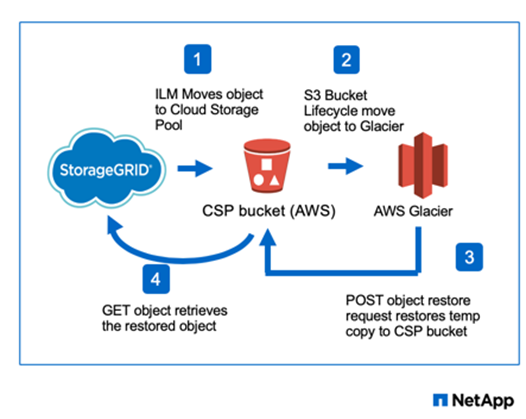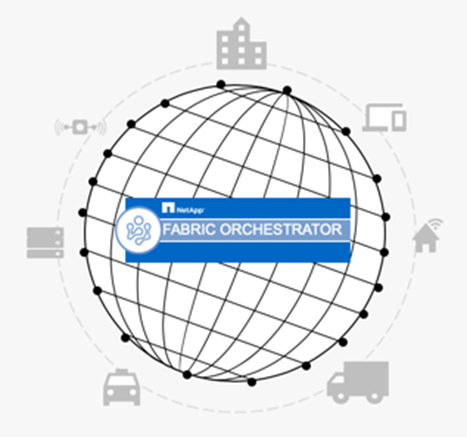I am lucky enough this week to be over in Sunnyvale, CA at my 6th ETL which is the NetApp A Team event. It also happens to be the week NetApp have their Spring 2019 release event.
Last year I spoke about their Spring Launch around a month earlier. That release saw updates focused on ONTAP 9.4, Security, FabricPool and FlexGroups. Here is a link to that post from last year.
This year I wanted to summarise some of the cool and important announcements NetApp have made this week.
It was around 5 years ago now that we heard the term “NetApp Data Fabric” but at the time it was mostly vision rather than an accountable option of being able to move data to and from multiple different locations regardless of the underlining technology it would be handled by the same control platform. Fast forward those 5 years and that “NetApp Data Fabric” vision is now well and truly a thing and can be consumed today.
NetApp Cloud Data Services was in my opinion the missing piece to the Data Fabric vision and this is not new it’s a real thing today.
A quote to back this up this morning was “For example, the NetApp Kubernetes Service (NKS), has over 19 THOUSAND clusters deployed as of this morning.”
Let’s get into some of these announcements.
StorageGRID
For any readers of my blog you will have seen two new posts over the last month touching at a high level some of the exciting things I think StorageGRID brings to the Object Storage world.
I am personally seeing a huge increase in conversations about on premises object storage options and this to me as some great differentiators that I touch on in those blogs.
The image below highlights the options and flexibility you have with NetApp StorageGRID and where and what you are able to run their Software Defined Object Storage Software on and where.

What’s new – StorageGRID tiering to AWS Glacier, Seamless integration with policy engine enables users to store and restore objects to/from AWS Glacier storage.
This means that using the ILM (mentioned in both of the posts linked above) has the ability to use the policy engine to move data to outside of the StorageGRID platform but still allow StorageGRID and the ILM to have access to that data.
This also enables customers to tier their data from possible on premises more expensive storage now into AWS Glacier.

As well as the above there has also been a focus around security introducing multi form factor authentication.
Cloud Volumes ONTAP
A quick 101 what is it? It is NetApp ONTAP software running in a cloud VM, managing native Public Cloud storage, it is licensed two ways either Pay-as-you-go or BYOL and is managed through a SaaS console with Cloud Central.
Cloud Volumes ONTAP prior today is available within AWS and Microsoft Azure, with the spring launch this has now been extended to Google Cloud as well.
The exciting thing about this and it was exciting before is now I can have on premises ONTAP and any or all of these Cloud Volumes ONTAP and providing I have the networking between in place I can transfer my data between and leverage those different public clouds for different scenarios against that data. Also add this into ONTAP Select which is ONTAP that can be ran as a virtual machine as a complete software defined storage option in any smaller ROBO type locations it’s a great option.

Fabric Orchestrator
Ok, we just touched on one of hurdles that NetApp didn’t have but have increasingly added over the last few years in terms of being able to run their ONTAP Operating System wherever, then leverage the ability to use their SnapMirror to replicate data between those systems.
The next challenge and this is what I will try and cover briefly in this section was now we could have all these different assets in all these different locations, the biggest challenge then becomes how do I manage it?
To me this is actually the missing puzzle piece that NetApp have needed for a while! I would also add connectivity to that same list, but this was the main problem to fix over the last few years especially when we saw Cloud Volumes ONTAP released.
Ok I will stop babbling now, what is Fabric Orchestrator?
“A centralised data control plane to discover, manage, control and govern your data estate, no matter where it is.”
I think in that one sentence that summarises what this is and this topic probably deserves its own post to get deeper into the weeds.
It’s not just Cloud Volumes ONTAP or just ONTAP systems even. The following options are also available to manage and control through Fabric Orchestrator.
- Cloud Volumes Service
- Azure NetApp Files
- Cloud Volumes ONTAP
- Cloud Volumes On-Premises
- Cloud Volumes on HCI

You can find out more information about everything here that was included in the launch event.
